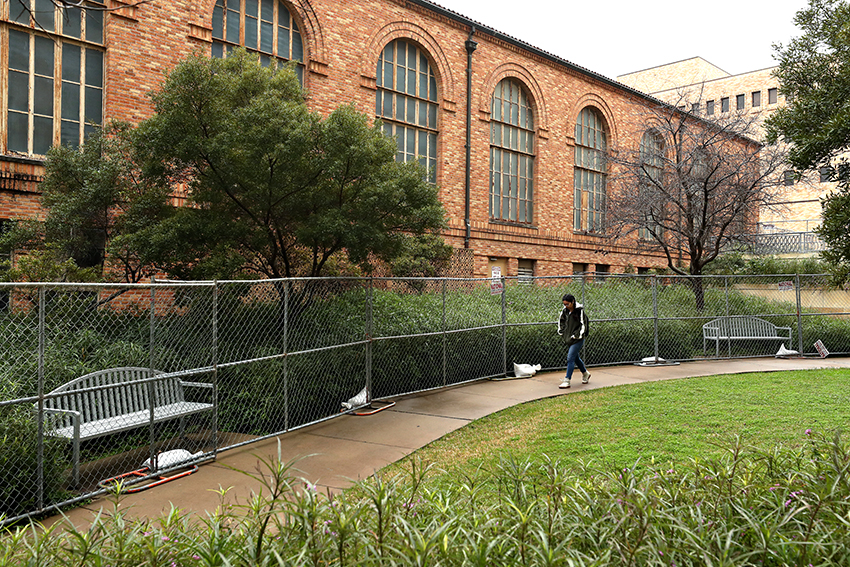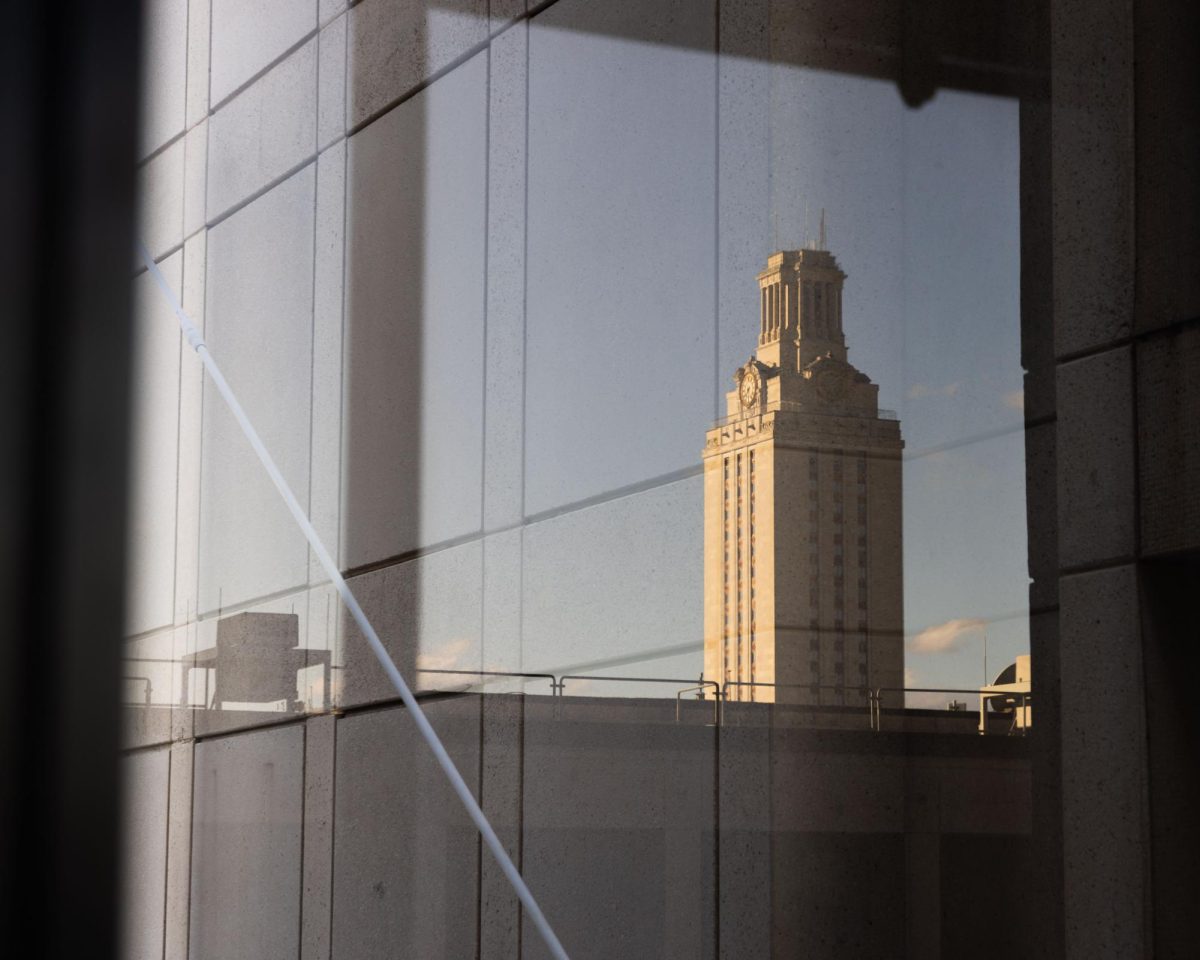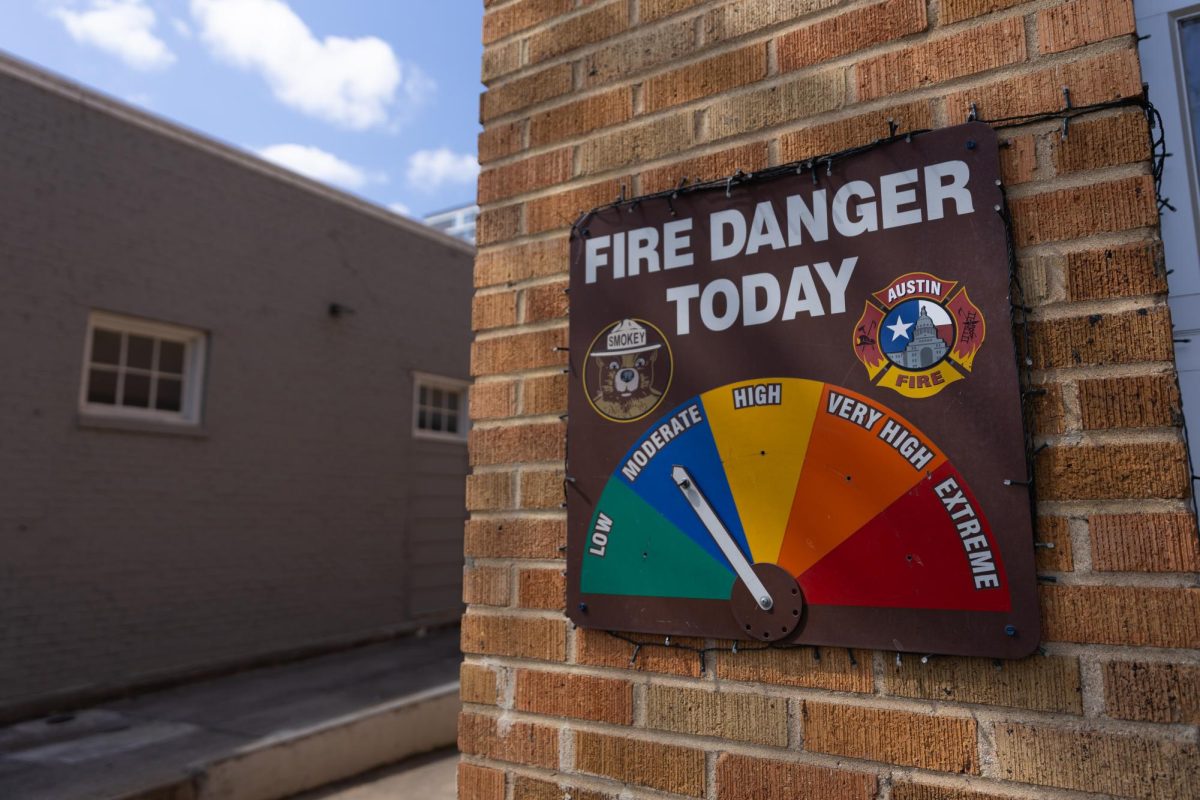For the past two years, Texas Aerial Robotics has worked out of empty classroom spaces in the aerospace engineering building. Because there is no lab on campus big enough, they test fly their drone on the top floor of a nearby parking garage.
“That wasn’t able to be used when there was any weather related issue, like if it was windy or raining, or even too sunny,” said Umer Salman, president of Texas Aerial Robotics. “Because we were only able to test our drone outdoors, it affected the way our sensors behaved.”
Last week, construction began on the Anna Hiss Gymnasium to house UT robotics programs. Currently, different robotics labs are located across engineering and natural sciences buildings, but they don’t have a centralized location, according to computer science professor Peter Stone.
“This will give us the space for large projects across departments,” Stone said. “Students from the different departments will have the space to sit together and interact with each other directly rather than just meeting at their different buildings.”
Anna Hiss Gym was built in 1930 as a recreation area, which included gym space and a natatorium, but has been underutilized for years, said Jill Stewart, associate director of Project Management and Construction Services.
“It’s an older building, so we are looking to give a more modern, contemporary use for it,” Stewart said. “We are kind of out of room on campus to create more space, so we are taking existing space and are able to renovate it so that it fits the needs of the program.”
Beginning stages of construction will include roof and window replacements, followed by interior renovations of the south side, which is set to open in early 2020. Because the gym is a historic building, not many changes will be made to the exterior, Stewart said.
“When dealing with historic buildings, we want to pay attention and do what we can to preserve the integrity of the building,” Stewart said. “Anna Hiss has been an important part of this campus for a long time.”
Robotics faculty members worked with architects to redesign the gym so that it reflects their current and future needs, Stone said.
“Our vision would be that it would be a very flexible and collaborative space, so there’s not a lot of permanent walls in the design,” Stone said. “As the research in robotics evolves and changes over the years and new faculty members are hired and new projects begin and end, the space will be reconfigured.”
Stone said another design objective was to let visitors view new robots projects while students are still conducting research.
“We will have a lot of glassed-in walls so that people can be in the hallways and see research that is happening without necessarily having to come in and ask for specific demos,” Stone said. “It will be an always-visible lab.”
Salman, an electrical engineering junior, said the space in the Anna Hiss Gym will give his organization much-needed indoor lab space with high ceilings to test their drone.
“We have been pushing for (the Anna Hiss Gym) to be a spot ever since … electrical engineering moved out of it when the new building was built,” Salman said. “It is perfect for what we need.”





















